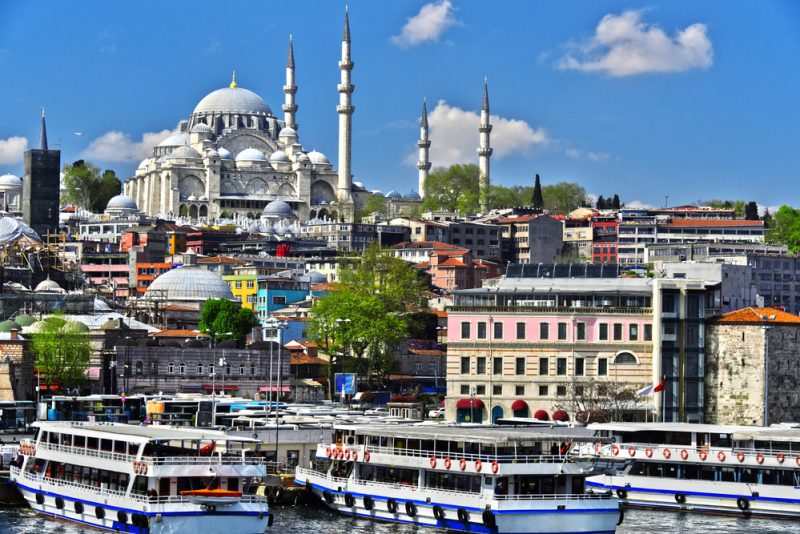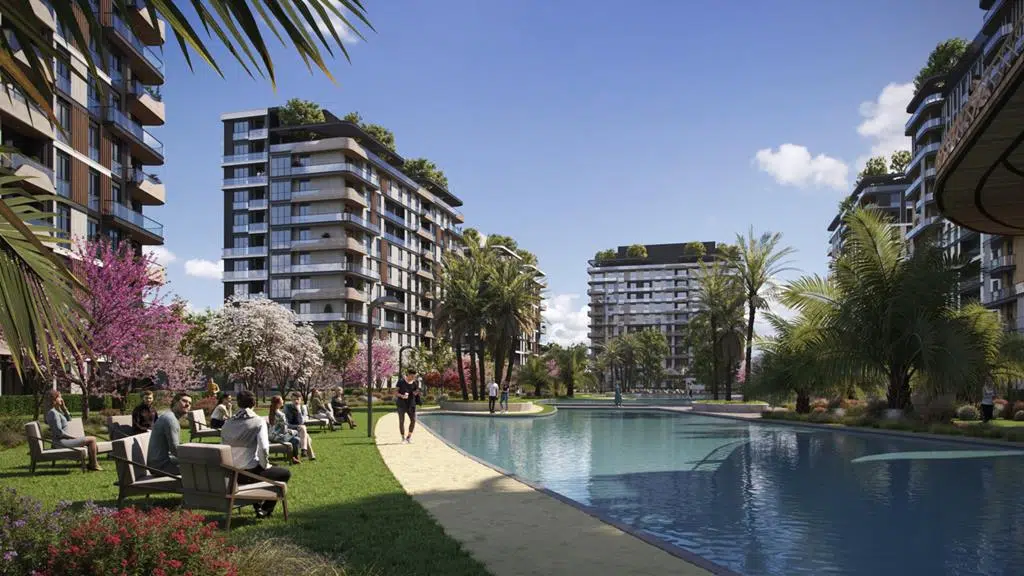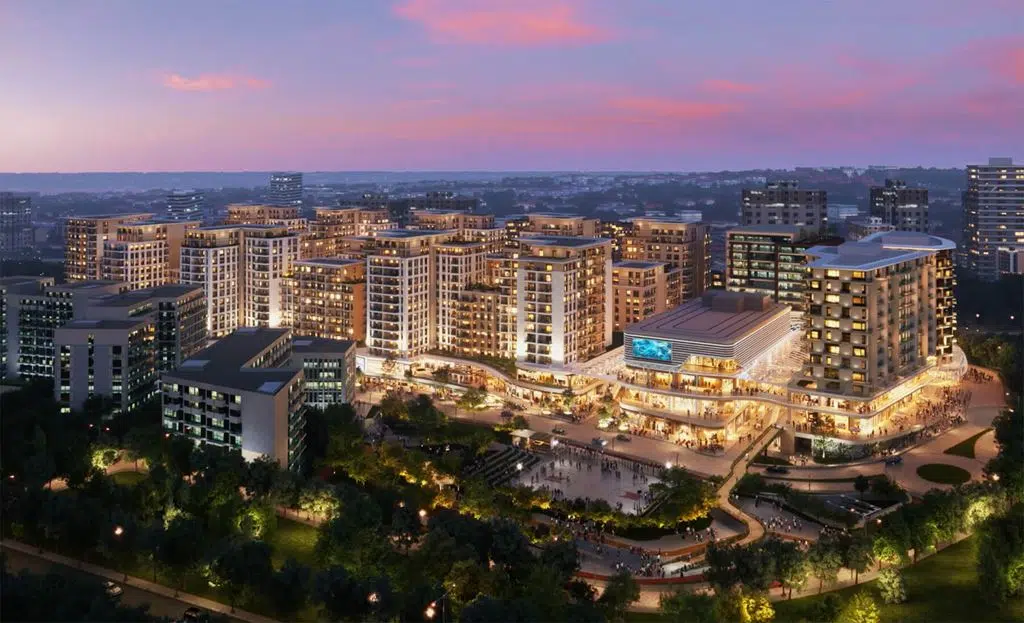Out of all enquires we receive for Turkey, most ask about Istanbul. Many are unaware of the importance of Istanbul, not only to Turkey but to the world. If they are aware, curiosity strikes, and they want to know precisely why Istanbul is so important. However, there is not one answer.
Numerous reasons make Istanbul stand out on the global stage for real estate, business and tourism. As Turkey‘s largest city, some assume the importance is due to size. But the past plays major roles in this alpha world city, from the importance of the golden horn and Galata bridge to historic areas like the grand bazaar, Hagia Sophia, and Topkapi palace.
Additionally, the present and future also contribute to the importance of Istanbul because, despite the mass global attention, the city has still not achieved full potential, especially regarding property investment.
Why is Istanbul So Important?
Brief Historical Timeline
Istanbul was Byzantium in ancient times and then the imperial Roman Empire capital built by the Roman Emperor Constantine on seven hills in 330 AD, which he named Constantinople. Serving as the city capital until the Ottoman empire invaded, Constantinople excelled in culture, trade, and politics. In addition, the old city was known for impressive architecture, including the Hagia Sophia, Hippodrome, and city walls.
After the Byzantine Empire fell, the imperial city became the Ottoman Empire’s capital city in 1453 for almost four centuries, until 1918. During this time, Istanbul transformed into a major economic centre. Various Ottoman Sultans ruled the city. Turks greatly admire these sultans for their various achievements. Famous Ottoman Empire Sultans who ruled from Istanbul include…
- Mehmed II (1451-1481) – He conquered Constantinople and became the first Ottoman Sultan to rule the city.
- Suleiman the Magnificent (1520-1566) – One of the greatest Ottoman Sultans, known for grand military conquests and expansion of the Ottoman Empire.
- Selim III (1789-1807) – introduced several reforms to modernise the Ottoman Empire, including creating new military forces.
These Ottoman Empire sultans shaped the history of Istanbul and the world. After World War I and the Ottoman Empire’s disbandment, Istanbul became the modern Turkish Republic in 1923. The rich history and roles of the Roman Empire’s and Ottoman empire’s capital have made the city important for tourism.
Current Day Istanbul
Istanbul, the largest and wealthiest city, has strong and diverse economies that contribute significantly to Turkey’s economic prosperity. The major city excels in trade, commerce, and tourism and is home to many large corporations, financial institutions, and thriving arts and entertainment scenes. Additionally, as a major city, Istanbul is a transportation hub, connecting the rest of Turkey and the world through airports, ports, and transportation networks. These factors and a large and well-educated population of roughly 15 million contribute to Istanbul’s economic strength and importance.
Where is Istanbul?
Istanbul sits in northwest Turkey, surrounded by the Marmara Sea, Black Sea, Bosphorus Strait and the Golden Horn. As well as central Istanbul, the name refers to the larger province and encompasses the entire city limits, including the urban areas, surrounding rural areas and smaller towns and villages. The Istanbul Province divides into 39 districts, each with a unique character and history. Istanbul Metropolitan Municipality is responsible for services and amenities to residents, including education, health care, transportation, and infrastructure.
Is Istanbul Europe’s Biggest City?
Technically, yes and no. Many people say Istanbul is the European capital, but the Bosphorus strait divides the city into two continents; Europe and Asia. According to the latest statistics, 65% of people live in European Istanbul, while 35% live on the Asian side. So if you look at Istanbul as a whole, then yes, the city is Europe’s biggest, but the term European capital is misleading. However, Istanbul is Turkey’s largest city and is the world’s only city on two continents.
Is Istanbul an Alpha World City?
An Alpha world city, also known as a global city, has a significant impact on the worldwide economy and is considered a major hub for business, property investment, finance, media, and culture. Advanced infrastructure, high living standards, and strategic location for international trade and travel often characterise an alpha world city. So, Istanbul is an alpha world city, and Turkey’s largest city, hence why anyone looking to invest in Turkey will head to Istanbul first. Such is the dominance of Istanbul as an alpha world city; many experts say that the global impact would be significant if Istanbul were to fall. Other Alpha world cities include London, New York, Paris, Tokyo, and Hong Kong.
Why is Istanbul not the Capital City of Turkey?
Istanbul is not the capital city of Turkey because the capital was officially moved from Istanbul to Ankara in 1923 by Mustafa Kemal Ataturk, the founder of the Turkish Republic. The decision to move the capital was part of Atatürk’s reforms aimed at modernising the country and was based on several strategic and political considerations.
- Geographic and strategic importance: Ankara is in central Anatolia Turkey, a safer and more secure location than Istanbul, which is vulnerable to naval attacks.
- Political symbolism: Ataturk wanted to break with the Ottoman past and establish a new, secular republic, and he saw moving the capital away from Istanbul, which was associated with the Ottoman Empire, as a way to symbolise the new modern Turkey.
Since the move, Ankara has served as the official capital of Turkey and has become an important centre of government, politics, and administration. However, Istanbul continues to play significant roles in Turkey’s development.
About European Istanbul
The European side of Istanbul, Turkey, is separated from the Asian side by the Bosporus Strait. Some famous landmarks and neighbourhoods on the European side include:
- Taksim Square – This popular gathering place and transportation hub is the heart of modern Istanbul.
- Istiklal Street: This busy pedestrian street with shops, restaurants, and historic buildings hosts millions daily who flock to shopping and nightlife scenes. (About famous shopping streets in Istanbul.)
- Galata Tower: This historic tower in the Galata neighbourhood offers a panoramic city skyline and Bosporus Strait views.
- Beyoglu city centre: This historic neighbourhood near Taksim Square features many chic boutiques, high-end restaurants, and lively nightlife scenes.
- Dolmabahce palace: As the Ottoman sultans’ last home, Dolmabahce palace was also where Mustafa Kemal Ataturk, the Turkish Republic’s founding father, passed.
- Sultan Ahmet – the tourism hub in Istanbul, where the UNESCO World Heritage sites from the Byzantine and Ottoman empires still stand.
About the Asian part of Istanbul
Although the European side of Istanbul is more developed and modern, the Asian side offers different perspectives on the city’s history and culture. Two prominent neighbourhoods in Asian Istanbul are….
- Uskudar: This historic neighbourhood in Asian Istanbul features Ottoman-era architecture and charming streets. (About the best Istanbul neighbourhoods to live in)
- Kadikoy: A lively community with cultural art scenes, attracting tourists and locals
Where is the Old City Part in Istanbul?
Old Istanbul refers to the historic old town district called Sultanahmet square. Officially, the old town part of Sultan Ahmet belongs to the more extensive Fatih District, named after Fatih Sultan Mehmed, the conqueror of Constantinople. As one of Istanbul’s oldest historical areas, several landmarks include the Blue Mosque and Hagia Sophia mentioned above. In addition,
- Topkapi Palace: This former palace of the Ottoman sultans was the first grand royal residence from which they ruled their empire. Today, the palace museum attracts thousands of tourists every week.
- Basilica Cistern – Known for the upside heads of Medusa, the Basilica Cistern emphasises ancient engineering.
- Grand Bazaar: This historic old city marketplace operates today and sits near the famous spice bazaar, near Galata bridge.
- The Walled city of Constantinople: This series of fortifications once encircled the ancient city from the Golden Horn and Marmara Sea. The historic areas of the Walled City of Constantinople are major landmarks in Fatih and offer stunning city views.
- Eyup Sultan Mosque: This large mosque near the Golden Horn is an important religious site associated with the Prophet’s companion, Eyyüb el-Ensari.
Mosques in Istanbul
Istanbul features many historic mosques, like the Sultan Ahmed Mosque boasting religious importance and architectural and historical value. The mosques also attract Middle East tourists and real estate investors. Famous mosques in Istanbul include:
- Sultan Ahmed Mosque (Blue Mosque) – The Blue Mosque in the Sultanahmet district is famed for blue tiles and six minarets. The Blue Mosque sits next to the ancient hippodrome.
- Hagia Sophia – Sitting across from the Blue Mosque, this former church and museum-now mosque is famous for the intricate dome, once the world’s largest.
- Suleymaniye Mosque – Built by the famous Ottoman architect Sinan, Suleymaniye mosque is one of Istanbul’s largest and most impressive.
- New Mosque (Yeni Camii) – This grand mosque on the Golden Horn is known for its impressive size and intricate decoration.
The Principal Seaport of Istanbul
Istanbul connects the Black Sea to the Marmara Sea, making the city a principal seaport and major city. The city’s strategic location at the crossroads of Europe and Asia, along with its natural deep-water harbour, has always boosted trade by sea. As a principal seaport for the Romans and Ottomans, the city is still important for shipping and business. The major city is also home to Haydarpasa Terminal, the largest and busiest cargo port in Turkey, and Galataport İstanbul cruise port, where all major cruise liners dock.
The Golden Horn of Istanbul Province
The Golden Horn, an inlet of the Bosphorus Strait, is a natural harbour, shaped like a horn and was an important commercial and maritime centre for centuries. The surrounding Golden Horn areas have rich cultural and historical heritage, with numerous landmarks, such as the Galata Tower, and the Balat neighbourhood with colourful houses and synagogues. Today, the Golden Horn offers stunning views of Istanbul’s skyline. Given the importance, anyone looking to buy property around the Golden Horn should be prepared to pay extra.
The Bosphorus Sea Route
The Bosporus Strait remains the only sea route with mass importance despite alternative sea routes like the Dardanelles Strait, between the Aegean Sea and the Sea of Marmara. Used by many cargo ships, tankers, and other vessels, the strategic importance of Istanbul as a principal seaport has made the Bosphorus crucial for global shipping trades and the subject of political and economic tensions through various decades.
In recent years, ideas involved alternative sea routes to bypass the Bosporus, like the proposed canal to link the Black Sea and the Marmara Sea, bypassing the Bosporus Strait and becoming another principal seaport. However, these projects face significant environmental and economic challenges, and their future remains uncertain. Therefore, regardless of alternative sea routes, the Bosporus Strait is likely to remain an important waterway for maritime influences in years to come.
Final Thoughts – Why Istanbul is so Important
Location: Istanbul, one of the largest cities in Europe and the world, sits at the crossroads of Europe and Asia, making the city an economic hub for trade, property, commerce, and tourism.
Growing Economy: The major city of Istanbul has diverse economic sectors, with strong manufacturing, service, and tourism industries, making the city vital for trade, property and commerce.
Rich Cultural Heritage: Istanbul’s rich cultural heritage, with thousands of years of history, includes famous landmarks like the Hagia Sophia, Topkapi Palace, and Sultanahmet Mosque, boosting international tourism.
Developing Infrastructure: This major city is undergoing significant investment and property development, with new roads, airports, public transportation systems, and other infrastructure projects underway.
Increasing Demand for Real Estate: With the growing economy and rising popularity of Istanbul for tourism and business, the ever-increasing demand for property presents attractive investment opportunities.
Lifestyle and Leisure: Istanbul offers cosmopolitan lifestyles, a multicultural population, and rich heritage. In addition, Istanbul’s thriving arts and entertainment scene features many cultural events, music, theatre, and other attractions.
Political Significance: Istanbul was the capital of the Ottoman Empire and remains a political and economic centre of modern Turkey, giving the city power and influence.
More About Istanbul – Turkey
Real Estate: Istanbul easily attracts investors because of the city’s growing economy and increasing popularity for tourism and business. But carefully consider all factors and thoroughly research before investing.
The real estate market is complex, so work with knowledgeable and experienced real estate professionals to help navigate the market and find the right property investment opportunity. Call us today and chat with an agent about the importance of Istanbul, or browse our portfolio of properties and use the contact details to arrange viewings.
Where to Buy Property in Istanbul: Knowing where is vital to wise investments. As Turkey’s most important city in terms of population, infrastructure, business, tourism, education, and health, Istanbul is expanding with recent trends and developments emerging all the time.
Over the last ten years, expansion on the European side has boosted the real estate market and bought in many foreign buyers and investors from overseas eager to cash in on the importance of Istanbul.













